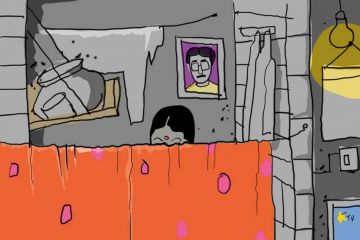
Prison was wanting
to breathe when somebody else had a finger up your nose.
—Norman Mailer, The Executioner’s Song
Rabia Sheikh’s*
eyes were swollen, her ears wouldn’t stop ringing, and her children were
driving her mad. The last few days in police custody had been brutal. As she
climbed out of the police van, she held ten-month-old Lara firmly on her hip
and grabbed hold of Amir who was three. Rahim, the elder of the two brothers
walked a few steps ahead. With the f





